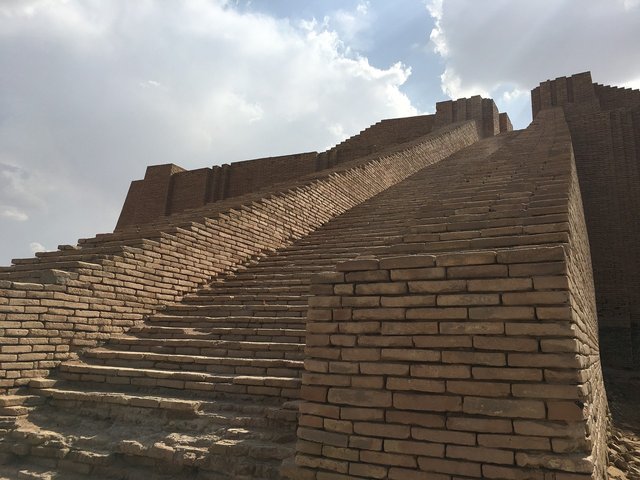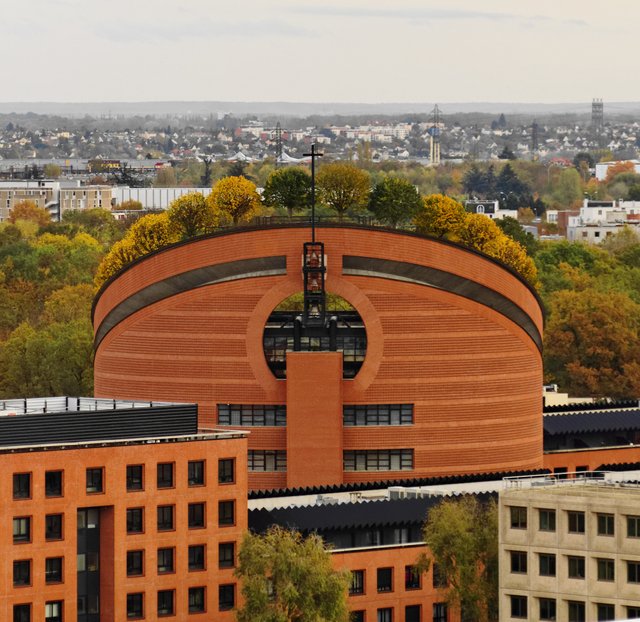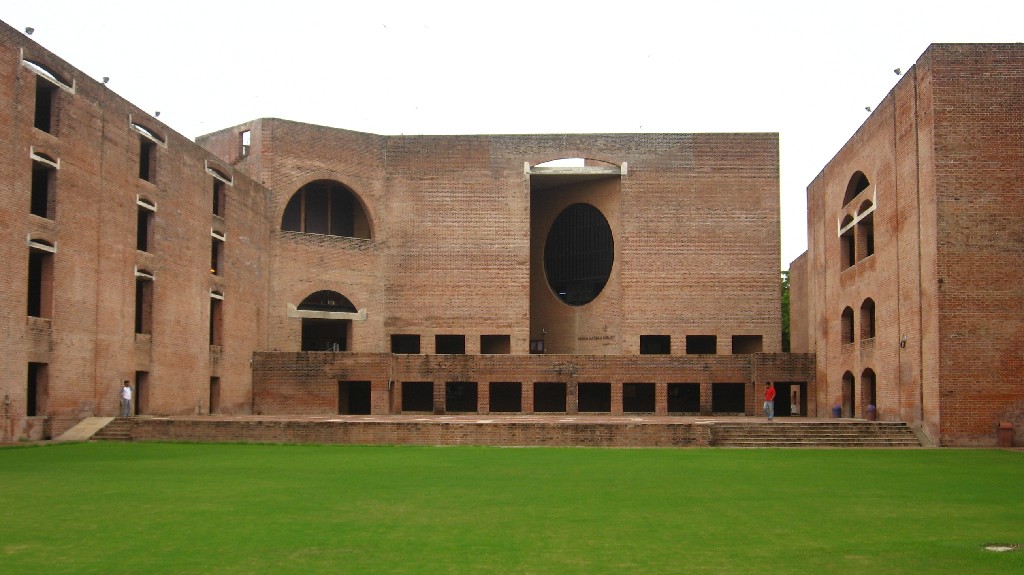I materiali dell'Architettura: I Laterizi - Quinta Parte// Materials of Architecture: The Bricks - Fifth Part [ITA - ENG]

CCO Creative Commons Ziqqurat di Ur

Salve gente,
perdonate l’assenza di questi ultimi giorni ma purtroppo non ho avuto il tempo materiale di mettermi a scrivere. Ma alla fine questo tempo l’ho trovato ed eccomi qui pronto a scrivere ancora dei nostri meravigliosi materiali dell’architettura.
Ci eravamo salutati con l’annuncio dell’arrivo dell’imminente evento che avrebbe segnato, fra le altre cose, una grande svolta nella storia del laterizio e dell’architettura. Dopo il periodo rinascimentale, in cui questo materiale è rimasto sulla scena seppur con qualche difficoltà, intorno alla metà del 1700, comincia questo lento e inesorabile mutamento delle condizioni economiche e sociali, denominato poi Rivoluzione Industriale, che rese indispensabile l’impiego del laterizio in architettura.
- Il laterizio nell’età moderna e contemporanea
Per capire meglio come la rivoluzione industriale abbia così fortemente influenzato la storia dell’impiego del laterizio è necessario capire meglio il contesto in cui iniziò e si sviluppò questa rivoluzione. Tutto cominciò in Inghilterra, probabilmente perchè all’epoca era il paese meglio preparato date le sue condizioni politiche favorevoli, che divenne il primo paese industrializzato. Successivamente, questo fenomeno si diffuse anche nel resto d’Europa e negli Stati Uniti.
Siamo intorno alla metà del XVIII secolo e, come abbiamo detto, stiamo assistendo ad un lento ma radicale cambiamento delle condizioni economiche e sociali. Cominciano a sorgere le prime industrie nelle immediate vicinanze dei centri più importanti o, talvolta, anche al proprio interno ed, inoltre, vi è un notevole incremento della popolazione.
In conseguenza a questo scenario, si va affermando il fenomeno del cosiddetto urbanesimo, ovvero il progressivo trasferimento, da parte delle grandi masse di contadini, dalle campagne alle città per avvicinarsi a questi nuovi insediamenti industriali. Ciò ebbe, naturalmente, grosse ripercussioni sull’architettura. Si rese necessaria la realizzazione di un grande numero di abitazioni destinate a questo flusso continuo della classe operaia, creando dei veri e propri sobborghi per le città industriali, e il mattone fu il materiale principalmente impiegato per la loro realizzazione.
Dopo la Rivoluzione Industriale, infatti, grazie all’invenzione del forno a fiamma continua, brevettato da Hoffmann e Licht, la produzione del laterizio si trova davanti ad una nuova straordinaria evoluzione: trova infatti largo impiego in diversi settori dell’edilizia come case, fabbriche, ponti e così via.
Contestualmente al fenomeno dell’urbanesimo si assiste ad una sorta di ritorno al passato in ambito architettonico, ovvero al ricorso dei grandi stili architettonici da parte dei progettisti per le nuove opere in divenire. E a ridare lustro al laterizio sono soprattutto il neoromanico e il neogotico, un esponente fondamentale è il neoromanico Hendrik P. Berlage.
Il suo capolavoro architettonico, fondamentale per lo sviluppo dell’architettura contemporanea, è il Palazzo della Borsa di Amsterdam, un’opera in cui l’uso del mattone si presenta semplice ma nello stesso tempo particolarmente raffinato e viene lasciato a vista, ovvero senza la copertura dell’intonaco, sia all’esterno che all’interno.
La produzione del mattone prosegue nel periodo compreso fra le due guerre, diffondendosi largamente nel campo dell’edilizia popolare. In questo periodo sono di grande interesse le opere di Peter Behrens, quali la Fabbrica AEG a Berlino e la Fabbrica Hoechst a Francoforte. La prima dal carattere essenziale e la seconda dagli effetti più espressionisti.
Un altro architetto che ha ottenuto grandi risultati con l’uso del mattone, riuscendo a dare una rilettura moderna al tema della classicità, è l’architetto Louis Kahn, fra le cui opere basta citare l’ Indian Institute of Management ad Ahmedabad.
Anche in Italia l’impiego del mattone è largamente diffuso in età moderna e contemporanea, questo anche grazie alla profonda tradizione che ha legato il laterizio al nostro Paese. Fra i vari esempi ricordiamo il Palazzo dell’Arte a Milano, di Giovanni Muzio o l’Istituto di Fisica a Roma di Giuseppe Pagano e così via.
.jpg)
CCO Creative Commons Palazzo dell'Arte, Milano, di Giovanni Muzio
Ovviamente le conseguenze della rivoluzione industriale riguardarono diversi settori come la tessitura e l’agricoltura, ma in merito ai materiali dell’architettura, oggetto del nostro interesse, l’innovazione più importante si ebbe con la storica invenzione della macchina a vapore di Watt, che portò alla produzione del ferro e della ghisa, che cambiarono completamente il modo di costruire e quindi l’architettura stessa.
L’impiego del ferro e della ghisa, usati per la realizzazione di travi, pilastri, ecc, permisero, infatti, di realizzare strutture caratterizzate da una maggiore leggerezza, versatilità e dalla possibilità di crescere in altezza, prendendo definitivamente il posto dei mattoni. Agli inizi del XX secolo, con l’affermarsi dei nuovi materiali da costruzione come il calcestruzzo o l’acciaio, il laterizio perde gradualmente la sua funzione strutturale.
Tuttavia si continua a farne grande uso ma con nuove destinazioni: viene impiegato, infatti, come materiale di alleggerimento per i solai, per il tamponamento delle pareti perimetrali o per il rivestimento per le coperture. L’adozione della muratura portante si limita ormai alle tipologie residenziali di piccole dimensioni, anche in virtù dell’introduzione della nuova normativa in merito all’ antisismica.
Ciò nonostante, nell’ambito dell’architettura dei giorni nostri, non mancano architetti che fanno grande uso del laterizio, e una testimonianza di questo è sicuramente data dall’operato dell’architetto Mario Botta, il quale coglie una sorta di eredità progettuale dal predecessore Louis Kahn, al punto da fare dell’uso del laterizio una garanzia di approccio alla progettazione. Basti pensare, fra le sue opere, ai progetti delle case unifamiliari a Stabio, Vacanno o Manno, o alla Cattedrale d’Evry, dove il laterizio ne è indiscusso protagonista.
Come abbiamo visto, dunque, il laterizio, anche in età contemporanea, trova il suo spazio seppur reinventandosi, per così dire, nelle nuove identità di cui abbiamo parlato prima. Vengono così prodotti i laterizi per le coperture (tegole e coppi) o da destinare alle pavimentazioni o, ancora, ai rivestimenti, ognuno pensato per avere delle specifiche qualità prestazionali.
In conclusione, miei cari lettori, possiamo dire che, come per la pietra, il laterizio costituisce uno di quei materiali dimostratisi senza tempo, certamente evoluto e trasformato nel corso dei secoli ma pur sempre protagonista indiscusso fra i tanti materiali dell’architettura. Con questo, almeno in merito ai laterizi, abbiamo concluso, ma, tranquilli, la storia non finisce certo qui… per ora vi dico “solo” grazie di avermi letto e alla prossima, vi abbraccio tutti!
L'Ego dice: "Quando ogni cosa andrà a posto troverò la pace".
Lo Spirito dice: "Trova la pace e ogni cosa andrà a posto".

CCO Creative Commons Cattedrale d'Evry, Mario Botta

Hello people,
forgive the absence of these last days but unfortunately I did not have the time to write. But in the end I found this time and here I am ready to write again about our wonderful architectural materials.
We said goodbye with the announcement of the arrival of the imminent event that would mark, among other things, a major turning point in the history of brick and architecture. After the Renaissance period, in which this material remained on the scene even if with some difficulty, around the mid-1700s, this slow and inexorable change in economic and social conditions began, then called Industrial Revolution, which made it indispensable the use of brick in architecture.
- Brick in the modern and contemporary age
To better understand how the industrial revolution has so strongly influenced the history of brick use it is necessary to better understand the context in which this revolution began and developed. It all began in England, probably because at the time it was the best prepared country given its favorable political conditions, which became the first industrialized country. Subsequently, this phenomenon spread also in the rest of Europe and in the United States.
We are around the middle of the eighteenth century and, as we said, we are witnessing a slow but radical change in economic and social conditions. The first industries begin to emerge in the immediate vicinity of the most important centers or sometimes even within it and, moreover, there is a notable increase in population.
As a consequence of this scenario, the phenomenon of the so-called urbanism is being affirmed, namely the progressive transfer, by the large masses of peasants, from the countryside to the cities to approach these new industrial settlements. This had, of course, major repercussions on architecture. It was necessary to build a large number of houses for this continuous flow of the working class, creating real suburbs for the industrial cities, and the brick was the material mainly used for their construction.
After the Industrial Revolution, in fact, thanks to the invention of the continuous flame furnace, patented by Hoffmann and Licht, the production of bricks is faced with a new extraordinary evolution: it is widely used in various building sectors such as houses, factories , bridges and so on.
Simultaneously with the phenomenon of urbanism, there is a sort of return to the past in the architectural field, that is, the appeal of the great architectural styles by the designers for new works in progress. And the neo-Romanesque and the neo-Gothic are above all re-dating the bricks, a fundamental exponent is the neo-Romanesque Hendrik P. Berlage.
His architectural masterpiece, fundamental for the development of contemporary architecture, is the Palazzo della Borsa in Amsterdam, a work in which the use of brick is simple but at the same time particularly refined and is left exposed, that is without the plaster covering, both outside and inside.
The production of brick continues in the period between the two wars, spreading widely in the field of social housing. In this period the works of Peter Behrens are of great interest, such as the AEG Factory in Berlin and the Hoechst Factory in Frankfurt. The first one has an essential character and the second one has the most expresssionist effects.
Another architect who has achieved great results with the use of bricks, succeeding in giving a modern interpretation to the theme of classicism, is the architect Louis Kahn, among whose works it is enough to mention the Indian Institute of Management in Ahmedabad.
Even in Italy the use of brick is widespread in modern and contemporary times, thanks also to the deep tradition that has linked the brick to our country. Among the various examples we mention the Palazzo dell'Arte in Milan, by Giovanni Muzio or the Institute of Physics in Rome by Giuseppe Pagano and so on.
Obviously the consequences of the industrial revolution concerned different sectors such as weaving and agriculture, but with regard to the materials of architecture, object of our interest, the most important innovation came with the historical invention of the Watt steam engine, which it led to the production of the iron and cast iron, which completely changed the way of building and therefore the architecture itself.
The use of iron and cast iron, used for the construction of beams, pillars, etc., allowed, in fact, to create structures characterized by greater lightness, versatility and the possibility of growing in height, taking the place of bricks definitively. At the beginning of the twentieth century, with the emergence of new building materials such as concrete or steel, the brick gradually lost its structural function.
However, it continues to make great use of it but with new destinations: it is used, in fact, as a lightening material for the floors, for the tamponing of the perimeter walls or for the covering for the roofs. The adoption of the load-bearing masonry is now limited to small-scale residential typologies, also due to the introduction of the new legislation on anti-seismic matters.
Nevertheless, in the context of modern architecture, architects who make great use of bricks are not lacking, and a testimony of this is undoubtedly given by the work of architect Mario Botta, who captures a a sort of design inheritance from the predecessor Louis Kahn, to the point of making the use of bricks a guarantee of a design approach. Just think, among his works, to the projects of the single-family houses in Stabio, Vacanno or Manno, or to the Evry Cathedral, where the brick is the undisputed protagonist.
As we have seen, therefore, the bricks, even in the contemporary age, find their space even reinventing themselves, so to speak, in the new identities we have talked about before. The bricks are then produced for roofing (tiles and roof tiles) or to be used for flooring or, again, for coverings, each one designed to have specific performance qualities.
In conclusion, my dear readers, we can say that, as for stone, brick is one of those materials proved timeless, certainly evolved and transformed over the centuries but still the undisputed protagonist among the many materials of architecture. With this, at least with regard to bricks, we have concluded, but, still, the story certainly does not end here... for now I say "only" thank you for having read and next, I embrace you all!
The ego says: "When everything goes right I will find peace"
The Spirit says: "Find peace and everything will fall into place"

CCO Creative Commons ***Indian Istitut of Management, Ahmedabad di Louis Kahn)
Letto tutto di un fiato.....
complimenti
Ti ringrazio! Ci si legge!
molto volentieri